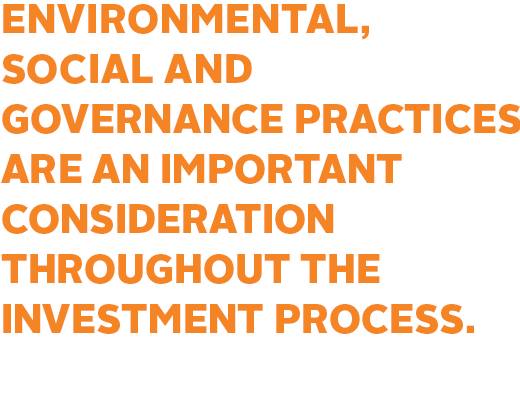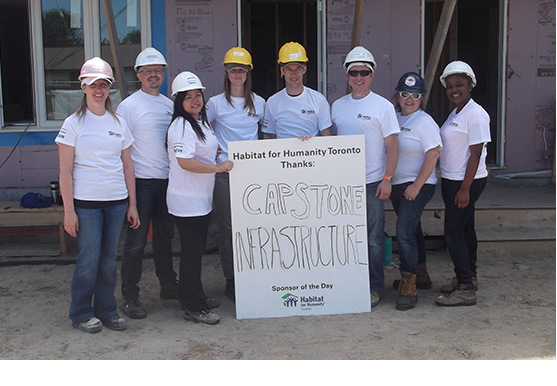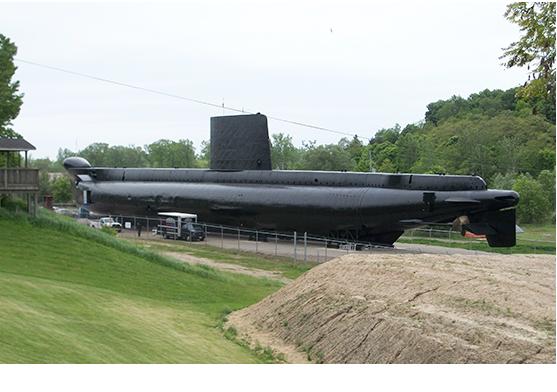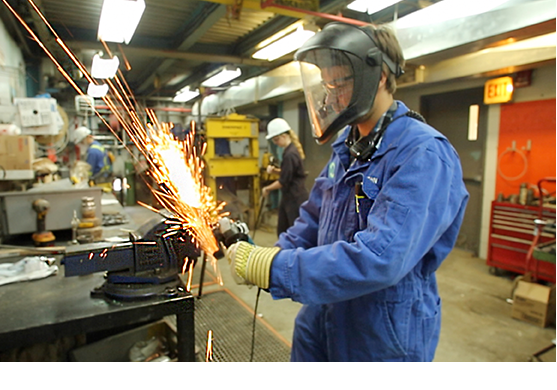 Whitecourt earned a Certificate of Recognition in 2013, reflecting its high health and safety standards.
Whitecourt earned a Certificate of Recognition in 2013, reflecting its high health and safety standards.
 Kilowatt hours of electricity generated by the solar photovoltaic system Bristol Water installed at its Purton treatment works facility.(1) All the electricity was used at the site, reducing Bristol Water’s carbon dioxide emissions by 145,000 kilograms.
Kilowatt hours of electricity generated by the solar photovoltaic system Bristol Water installed at its Purton treatment works facility.(1) All the electricity was used at the site, reducing Bristol Water’s carbon dioxide emissions by 145,000 kilograms.
(1) In the regulatory year ended March 31, 2013.
We strive to manage our business in the best interest of our shareholders while fostering a work environment where our employees can excel and make a difference in the communities where our businesses operate. Integrating social and environmental considerations into our operations and culture improve the overall performance of our company by helping us to use resources more efficiently, enhance health and safety practices, increase capital efficiency, and nurture stakeholder relationships.
During 2013, we operated in compliance with all occupational health and safety and environmental regulations that pertain to our various businesses in Canada and abroad.
Health and Safety in the Workplace
Workplace safety, and concern and respect for all employees and contractors, is a core value and objective of Capstone. Our businesses have extensive health and safety practices as well as training programs to protect employees and encourage ongoing professional development.
Across our power businesses, employees received over 4,225 hours of safety training in 2013, on a range of topics including transporting hazardous goods, substation maintenance, fire safety, working in confined spaces, fall protection, first aid and chemistry for boilers.
The power businesses also maintained a strong safety record, with Cardinal Power and Erie Shores marking their 17th and 7th consecutive years, respectively, without any lost-time injuries. Notably, Whitecourt was awarded a Certificate of Recognition by the Alberta Association for Safety Partnerships, reflecting the high standards of Whitecourt’s health and safety management system. Whitecourt did not record any lost-time injuries in 2013.
At our utilities businesses, employees received approximately 5,350 hours of training on a range of subjects, including first aid, electrical and fire safety, and working in confined spaces. In 2013, Bristol Water recorded three serious safety incidents of lost time due to two crush injuries to a hand or finger and one offsite traffic accident. Bristol Water provided additional training to employees, promoted the company’s safety policies and provided guidance on the importance of reporting workplace hazards. Värmevärden recorded one injury that resulted in lost time when an employee slipped on snow while performing maintenance work. A ramp was permanently installed to prevent similar incidents from occurring.
 Number of litres of water Bristrol Water is helping customers to save every day.
Number of litres of water Bristrol Water is helping customers to save every day.
 Amount by which Bristol Water reduced its electricity consumption.(1)
Amount by which Bristol Water reduced its electricity consumption.(1)
(1) In the regulatory year ended March 31, 2013.
Engaging with Our Communities
We strive to maintain strong relationships with each of our communities, including donating our time, skills, ideas and financial resources to help with many local initiatives.
Cardinal Power donated a scoreboard for the community of Cardinal’s new arena, provided two bursaries to graduating high school students, and made contributions to support a local food bank and community events.
Erie Shores provided supplies and funds to help support the Municipality of Bayham’s wind power interpretive centre, and donated time, talents and funds to other community organizations. Whitecourt supported local health and wellness campaigns, and various community events.
Bristol Water distributed more than 35,000 water-saving items to help customers reduce water use, helping customers to save a total of 956,000 litres of water each day. Bristol Water also offers a number of leisure and recreational pursuits, including fish, sailing and bird watching at its lakes and reservoirs, enabling the local community to connect with and learn about nature.
At Capstone’s head office, corporate employees supported various local charities in 2013 by buying the right to dress casually every Friday, contributed to holiday toy drives and fundraised and volunteered for Habitat for Humanity.
 Capstone, Regional Power and the shíshálh First Nation share in the Sechelt hydro facility’s Award for Environmental Stewardship and Community Improvement.
Capstone, Regional Power and the shíshálh First Nation share in the Sechelt hydro facility’s Award for Environmental Stewardship and Community Improvement.
 Number of salmon that returned to Sechelt Creek during the 2013 spawning season.
Number of salmon that returned to Sechelt Creek during the 2013 spawning season.
Respect for the Environment
Our infrastructure businesses have an impact on resources such as water, energy and other raw materials. We endeavour to manage that impact responsibly and to enhance the local environment wherever possible.
Our renewable power businesses generate enough green electricity every year to power the equivalent of approximately 87,000 households.
The Sechelt hydro power facility maintains a salmon spawning channel at the facility by ensuring a constant supply of water and removal of debris. In 2005, Sechelt was awarded the UNESCO International Hydro Power Association Blue Planet Prize reflecting its social, environment and technical excellence. In 2013, Clean Energy BC presented Sechelt with its Award for Environmental Stewardship and Community Improvement, recognizing the facility’s manmade salmon-spawning channel, which has rejuvenated the salmon run in Sechelt Creek, and its strong partnership with the shíshálh First Nation.
Similarly, the Wawatay facility features an engineered nursery channel and tailrace to support the river’s local fish populations. Notably, the Wawatay facility was the first hydro project partnership in Ontario with a First Nation Community.
In 1997, Whitecourt Power became the first power generation facility in Canada to earn an EcoLogo designation, reflecting the environmentally friendly profile of biomass-fired power generation.
As a 168-year-old company, sustainability is embedded in Bristol Water’s culture and business strategy. Among other environmental initiatives, Bristol Water is working to reduce its carbon footprint by 50% by 2050, including encouraging its employees to cycle to work rather than drive, and minimizing business travel by using teleconferencing and web communication.
In 2013, Bristol Water outperformed the water industry average across a range of measures, including drinking water quality, leakage, supply interruptions, wildlife protection, waste management and pollution prevention.
Bristol Water also works with stakeholders to provide training and education for wildlife groups and the public. These programs include its award-winning work with Bristol Zoo and Avon Wildlife Trust on an endangered species protection program for white-clawed crayfish, and Trout & About, a project that teaches local schoolchildren about the water environment and the trout’s life cycle and helps them to rear trout for release back into the natural environment.

Incorporating Sustainability into Our Investment Process
We manage our environmental and social responsibilities throughout the investment process, which includes:
Review and evaluation of possible acquisitions
Our due diligence process includes reviewing a business’ environmental and occupational health and safety (OH&S) risk management as part of our assessment of the broader risk management framework. This includes the use of independent experts to identify issues and obligations related to the investment.
Ongoing management
Each business maintains its own risk management system to manage its obligations and risks. Our ability to control or influence these frameworks depends on our level of ownership or control and the regulatory framework that governs specific environmental and OH&S risks. Each business must report to the Board of Directors on risk management, which helps ensure compliance with regulatory requirements as well as timely identification and resolution of issues.
Stakeholder reporting
Capstone reports annually to shareholders on how the company manages its environmental and social responsibilities, including a summary of our policies, responsibilities and regulatory compliance record.
 Capstone’s corporate team raised $5,000 in support of Habitat for Humanity.
Capstone’s corporate team raised $5,000 in support of Habitat for Humanity.
 Employees at Erie Shores donated their time and talents to prepare for the grand opening of the HMCS Ojibwa, the community’s newest tourist attraction.
Employees at Erie Shores donated their time and talents to prepare for the grand opening of the HMCS Ojibwa, the community’s newest tourist attraction.
 Capstone strives to foster a safe work environment where employees have the tools and resources to excel and be successful.
Capstone strives to foster a safe work environment where employees have the tools and resources to excel and be successful.
Sustainability in Action
A helping hand in the community
In July 2013, Capstone’s corporate team participated in Habitat for Humanity’s Adopt-A-Day Challenge, raising nearly $5,000 and volunteering time to help build two wheelchair-accessible homes in Toronto. Habitat for Humanity crew leaders put Capstone’s employees through their paces with work assignments including painting, caulking and framing.
Habitat for Humanity mobilizes volunteers and community partners in building affordable housing and promoting homeownership as a means to breaking the cycle of poverty.
Learn more at www.habitat.ca
All hands on deck at Erie Shores
Port Burwell, Ontario, home to Capstone’s Erie Shores Wind Farm, is a small community nestled against the beautiful beaches of Lake Erie’s shoreline. While small in size, the municipality has a history of thinking big, embracing both one of Ontario’s largest wind farms and, more recently, a significant piece of Canadian military heritage.
Since the start of commercial operations in 2006, the 99-megawatt Erie Shores Wind Farm, which stretches for about 25 kilometres along the lake’s north shore, has emerged as a point of pride for the community and as a tourist attraction. The facility hosts a number of tours annually for schools and community groups, and provides support to a municipal wind power interpretive centre that draws visitors over the summer season.
In 2013, Port Burwell, a bustling port and rail terminal for much of its history, welcomed the arrival of another new, equally popular resident: the HMCS Ojibwa, an Oberon-class submarine dating from the Cold War era. The HMCS Ojibwa submarine, the first built expressly for the Royal Canadian Navy, is now owned by the local Elgin Military Museum, which is developing a new Museum of Naval History.
The team at Erie Shores Wind Farm was more than happy to donate its time, resources and skills to prepare for the grand opening of the submarine, helping to plan the electrical service layout, installing new flooring and providing general labour.
This new museum is expected to draw tens of thousands of visitors annually, resulting in increased revenue for local restaurants and small shops and creating new permanent and seasonal jobs for members of the local community.
Learn more about Project Ojibwa at http://projectojibwa.ca
Succeeding at safety
In September 2013, Whitecourt Power earned a Certificate of Recognition (COR) from the Alberta Association for Safety Partnerships, validating the high quality and safety standards in place at the facility.
Employees at the facility worked for two years to strengthen and evolve their safety program in preparation for the intensive safety audit required to achieve a COR standard.
The COR program is an occupational health and safety accreditation process that verifies a fully implemented health and safety program that meets COR standards. The end result is a highly effective safety and health management system to reduce incidents, accidents and injuries as well as their associated human and financial costs.
Across Capstone’s businesses, our safety goals are to:
- Achieve zero accidents at our businesses and instill an industry-leading safety culture.
- Consider all accidents or near-misses to be preventable.
- Identify the root causes of all incidents.
- Assess the businesses’ health and safety performance quarterly and annually.
A key value of Capstone is to foster a professional, safe work environment where our people have the tools and resources to excel and be successful. There is nothing more important than the well-being and safety of our employees and those who work with us.































